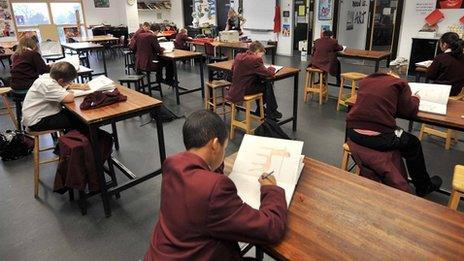London places crisis to hit secondary schools
- Published
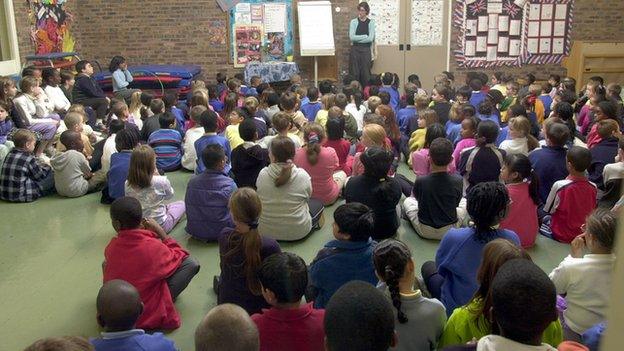
The school-age population in London is forecast to rise twice as fast as in the rest of England
Pupils in London face a growing funding gap, with the school-age population forecast to rise by 12% over five years, argues a report.
"Do the Maths 2015" says the government is not providing enough cash for new school places needed in the capital.
The report, from London Councils, external, says 78,000 secondary and 34,000 more primary places will be needed by 2020.
The government says its free schools programme will create 270,000 school places in England over five years.
London Councils, which represents the 32 London boroughs, plus the City of London, fears crunch time is rapidly approaching for the capital's education budgets.
There has been "unprecedented growth in demand" for school places in London, says the report.
Secondary pressure
The number of school-age children (aged five to 19) increased by 112,000 in London in the five years to 2015.
Local authorities have a legal responsibility to ensure there are enough school places. So far, schools and London boroughs have managed to provide these places.
But London's school-age population is forecast to rise by another 12% over the next five years, nearly twice the rate for the rest of England.
By 2020, there are expected to be 146,000 more five to 19-year-olds in London than there are now.
This represents about a quarter of the overall increase expected in England.
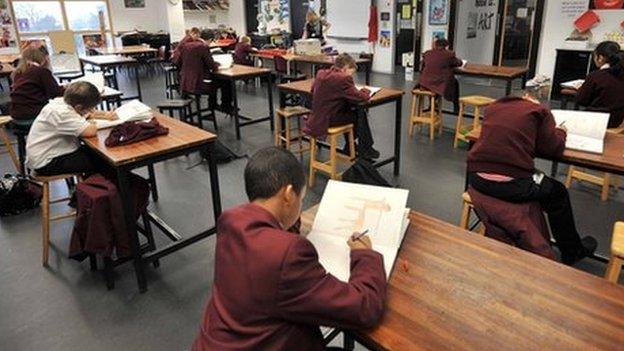
The places crunch will begin to hit the capital's secondary schools by 2020, says London Councils
The authors warn that while the focus so far has been on primary schools, demand has now reached secondary schools, which are more complex, requiring specialist facilities such as art blocks and laboratories.
Providing new secondary places could cost up to twice as much as primary places, says the report.
The report asks the government to fully fund the continued expansion of schools in London by allocating at least £1.5bn to create new school places in the two years from 2018 to 2020.
'Not sustainable'
So far, says the report, councils in London have had to borrow, sell assets and divert funds from school maintenance to provide extra places.
They warn this is not sustainable as the places crunch continues.
"At a time when budgets are under pressure across the board, boroughs cannot continue to subsidise the cost of school places in London," said Peter John, London Councils' executive member for children, skills and employment.
"Time is running out for the government to fully support councils' efforts to provide primary and secondary school places in the capital over the next five years.
"Councils in London have worked exceptionally hard with school heads and governors since 2010. But without sufficient resources it will be extremely difficult to manage complex primary expansions and meet the rising demand for secondary school places in the future," warned Mr John.
The report says the government's commitment to new free schools will help meet some of the need for places but urges the Department for Education "to ensure all new free schools are prioritised in areas of need".
The government said it had doubled funding for school places to £5bn during the last parliament, creating half a million new school places since May 2010, with a further £7bn committed to create more places over the next six years.
A DfE spokeswoman said: "London has benefited significantly from this investment, receiving almost £2bn in the last four years, almost 40% of all the funding provided to local councils for new places.
"In London alone, free schools have already created almost 50,000 school places.
"Today, we have approved a further two new London free schools and 18 more are opening in the capital this term, creating an extra 9,000 school places, giving parents more choice than ever before."
- Published22 July 2015
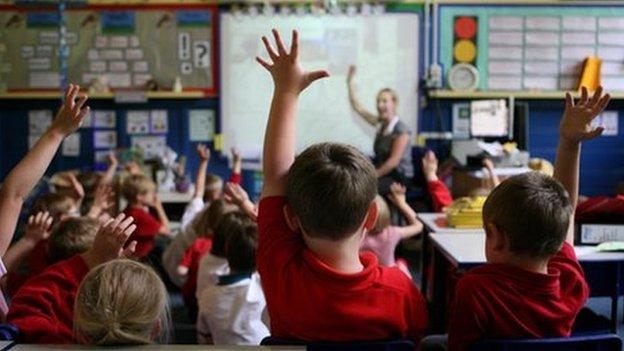
- Published16 April 2015
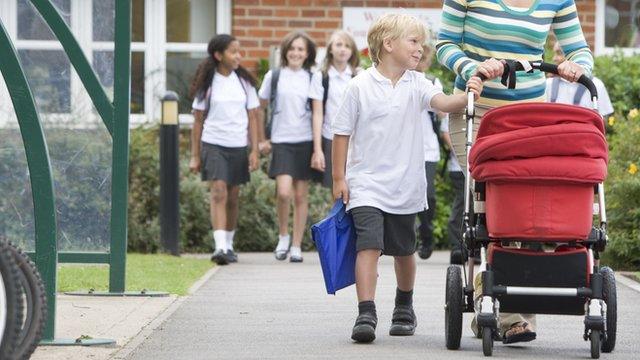
- Published3 April 2015

- Published2 March 2015
